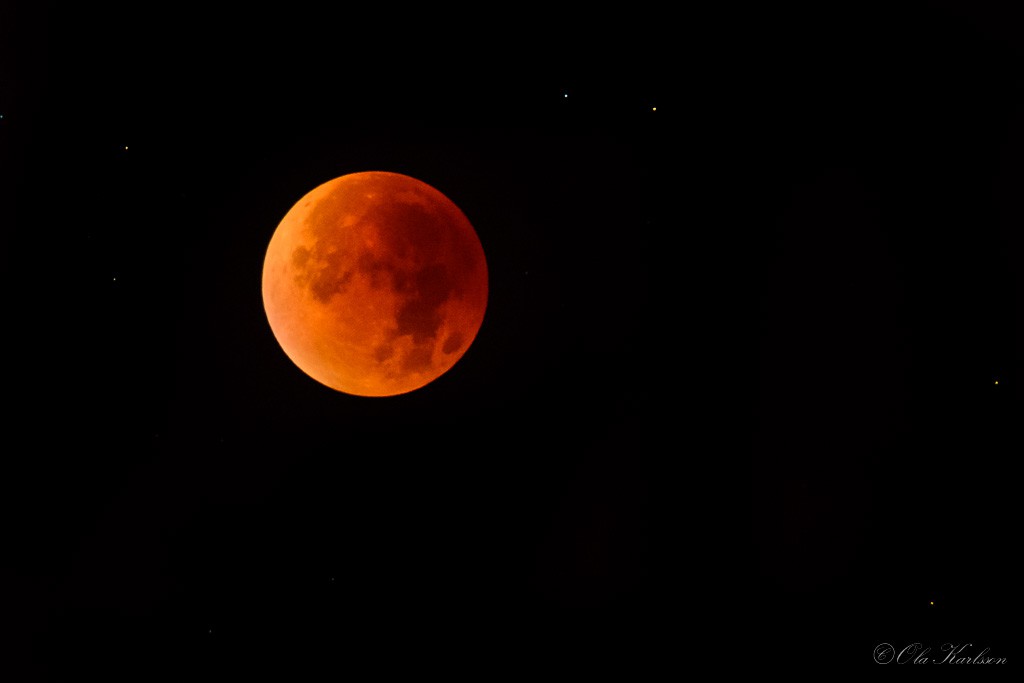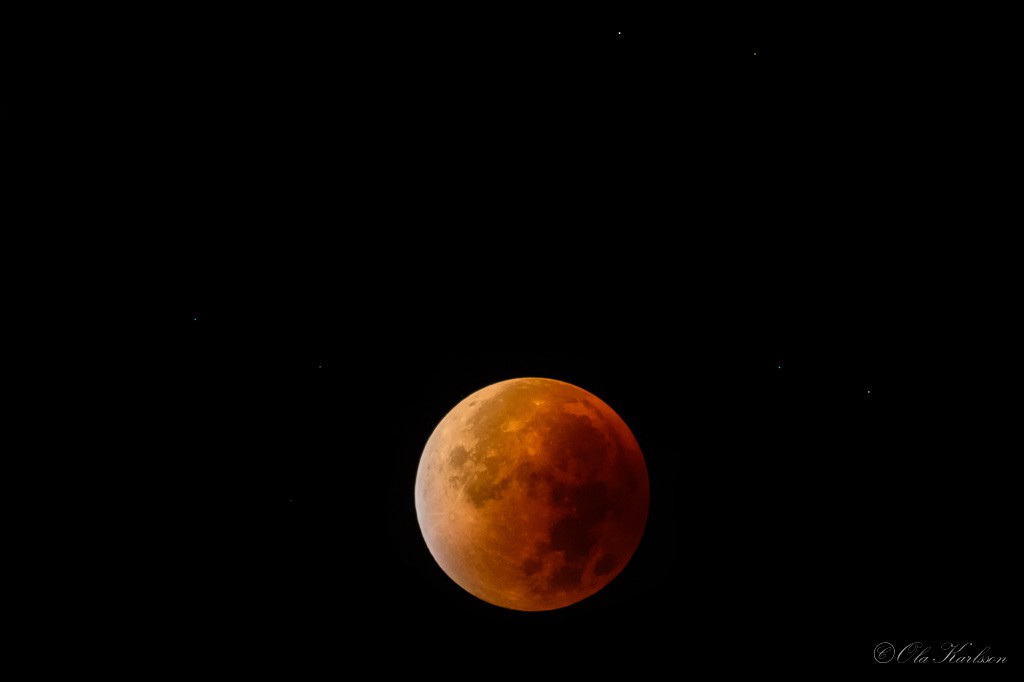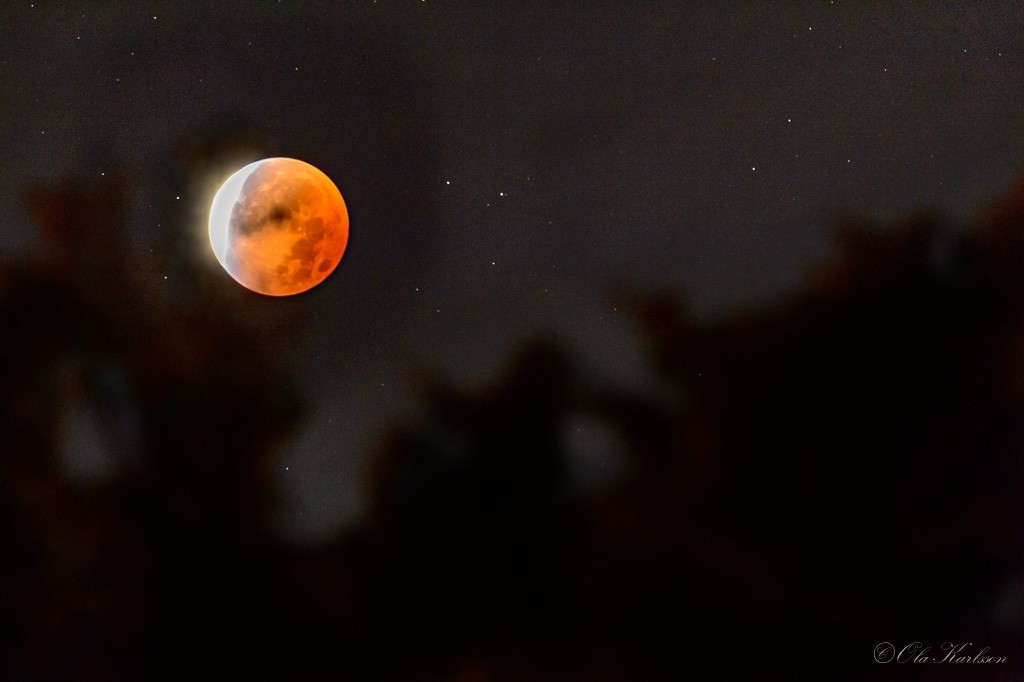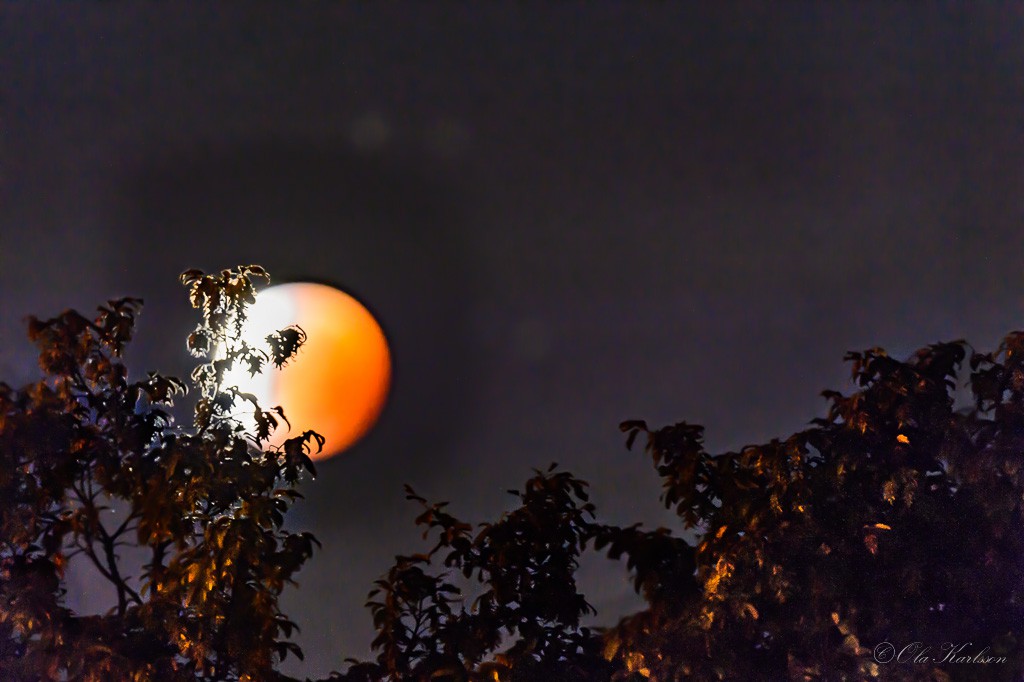28/9-2015

Super Blood Moon – Total Eclipse. ©Ola Karlsson
This morning it was the rare occasion of the event called a “Super Blood Moon”, which is a total lunar eclipse coinciding with a supermoon. At 04.11 the moon dipped into the deepest and darkest part of Earth’s shadow and there was a total eclipse 72 minutes until 05.23.
A supermoon is when there is a full moon or a new moon with the closest approach the Moon makes to the Earth on its elliptical orbit, which results in the largest apparent size of the lunar disk as seen from Earth and approximately every 14th full moon will be a supermoon. So we had a supermoon last night but this was not enough since there was also a spectacular total lunar eclipse or a so called “blood moon”, which occurs when the Moon passes directly behind the Earth into its shadow – when Earth’s shadow completely covers the moon and turns it an eerie red. So for this to happen the sun, Earth and moon have to be aligned in “syzygy” – exactly, or at least very close and therefore a total lunar eclipse can occur only the night of a full moon.

Super Blood Moon – Total Eclipse – Last stage. ©Ola Karlsson

Super Blood Moon – Partial Eclipse. ©Ola Karlsson
During the total eclipse, sunlight shining through the ring of Earth’s dusty atmosphere is bent, or refracted, toward the red part of the spectrum and cast onto the moon’s surface. As a result, the lunar disk can go from a dark gray color during the initial partial phase of the eclipse to a reddish-orange color during totality. The moon’s color during totality can vary considerably depending on the amount of dust in the Earth’s atmosphere at the time.
The Super Blood Moon has happened only five times since 1900 and the last time we saw this was in 1982, and it won’t repeat until 2033.

Super Blood Moon – Partial Eclipse – Moon going down in Lund. ©Ola Karlsson
